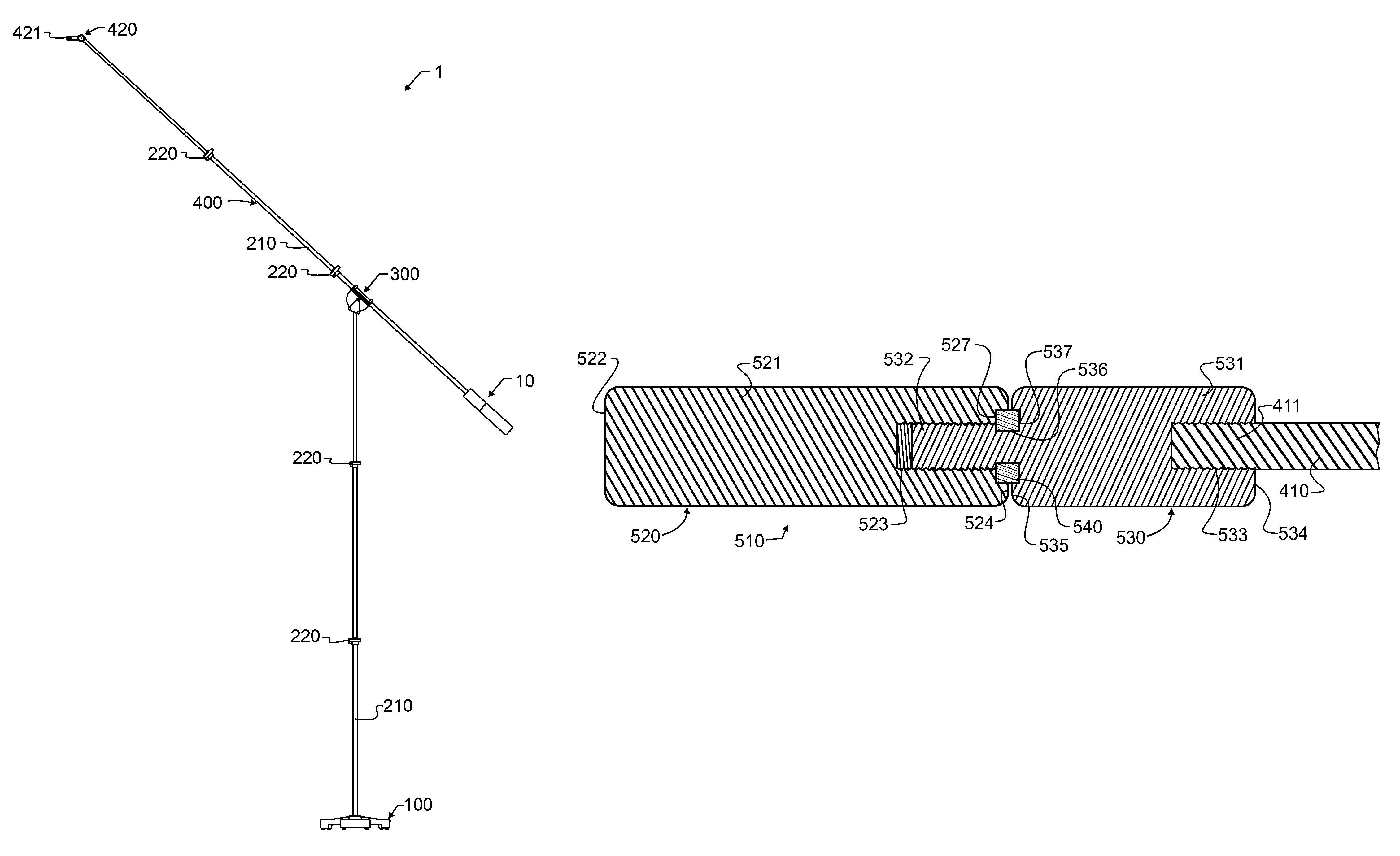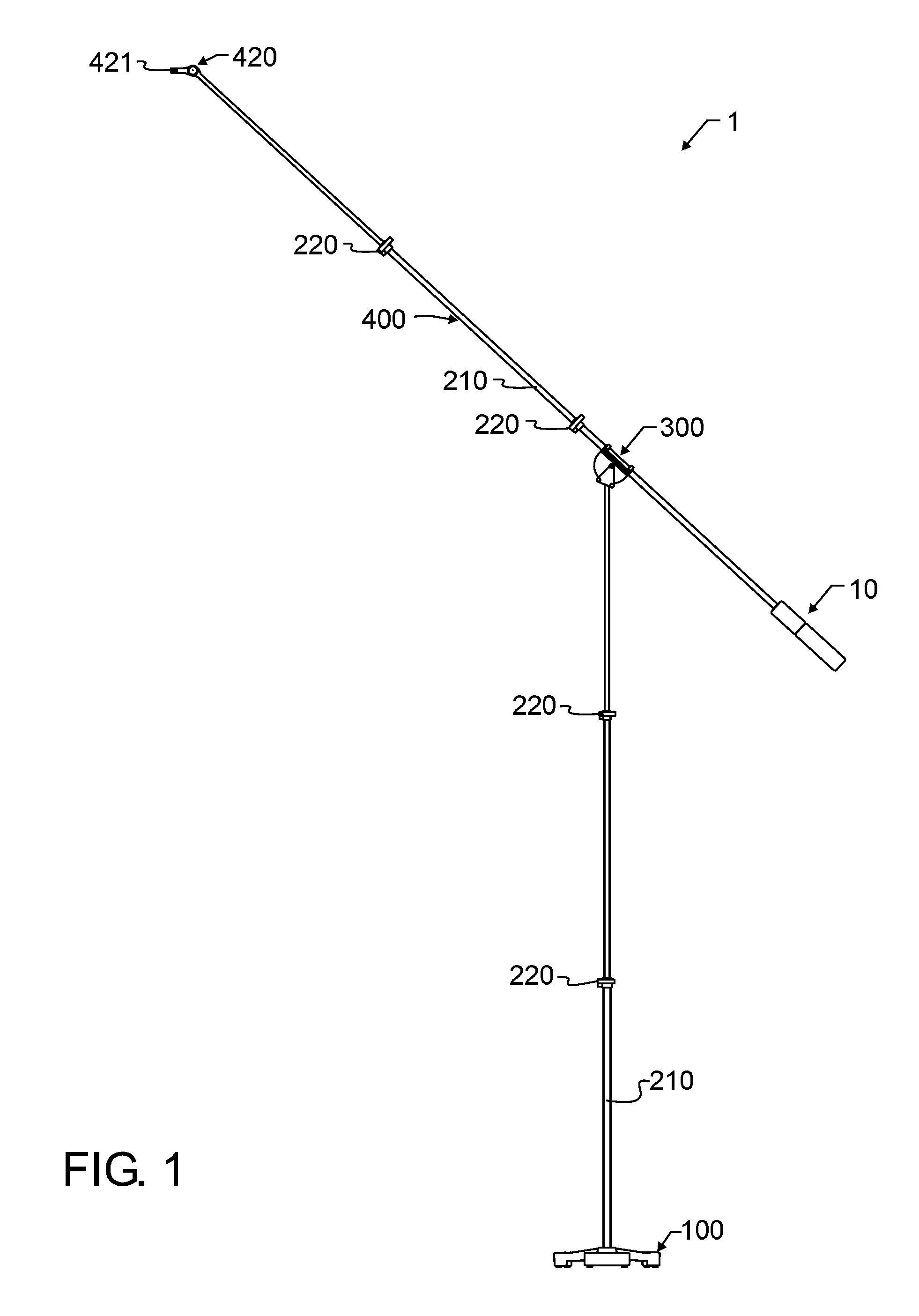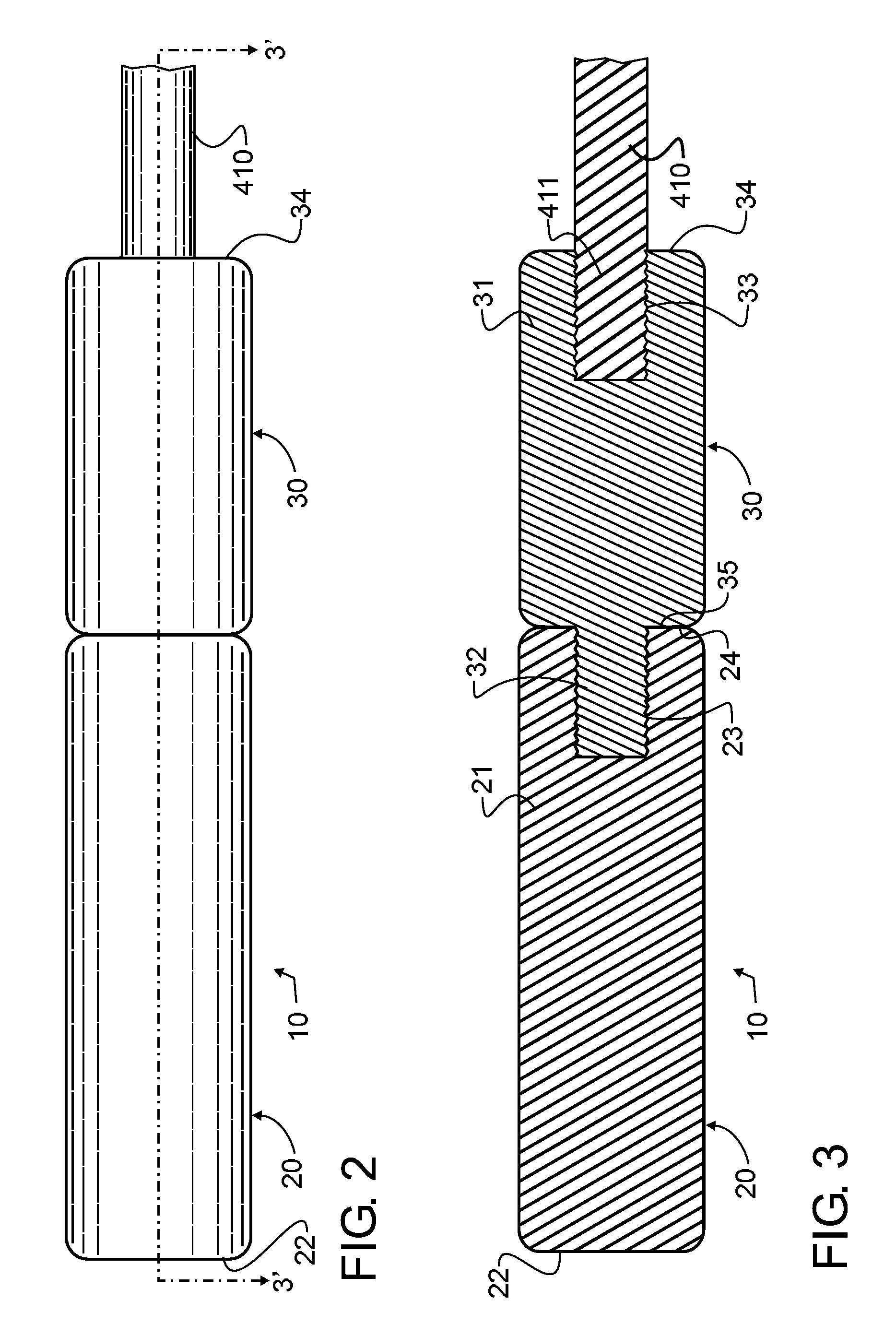Boom stand stacking counterweights
a technology of counterweights and boom stands, applied in the direction of machine supports, stand/trestles, mouthpiece/microphone attachments, etc., can solve the problems of not being able to be used or stored in close arrangement, the base is not easily transported, and the boom is prone to sagging, so as to prevent the tipping of the vertical support, the effect of preventing the sagging and preventing the sagging
- Summary
- Abstract
- Description
- Claims
- Application Information
AI Technical Summary
Benefits of technology
Problems solved by technology
Method used
Image
Examples
Embodiment Construction
[0037]Manifested in the preferred embodiment, the present invention provides a boom stand 1 which is adapted to support one or more of a variety of known devices thereon, including but not solely limited to an electroacoustic device such as a microphone. More specifically, but not limited thereto, microphones, cameras, lights, medical equipment, and many other devices may be supported therefrom. For reasons to be explained herein below, the support of sensitive electrical or electronic equipment is most preferred, especially pertaining to microphones, but the application of the present invention is not solely limited thereto and is instead contemplated by the present inventor to have other applications as well.
[0038]Boom stand 1 includes a base 100 which is designed to support boom stand 1 upon a floor or other surface. Most preferably, though not an absolute requisite, the floor or other surface will be relatively planar or flat, at least in the region adjacent to base 100. This pe...
PUM
 Login to View More
Login to View More Abstract
Description
Claims
Application Information
 Login to View More
Login to View More - R&D
- Intellectual Property
- Life Sciences
- Materials
- Tech Scout
- Unparalleled Data Quality
- Higher Quality Content
- 60% Fewer Hallucinations
Browse by: Latest US Patents, China's latest patents, Technical Efficacy Thesaurus, Application Domain, Technology Topic, Popular Technical Reports.
© 2025 PatSnap. All rights reserved.Legal|Privacy policy|Modern Slavery Act Transparency Statement|Sitemap|About US| Contact US: help@patsnap.com



